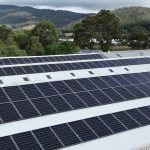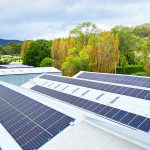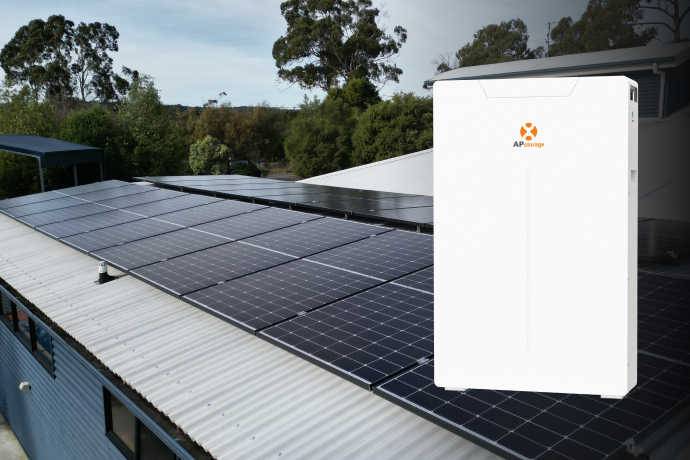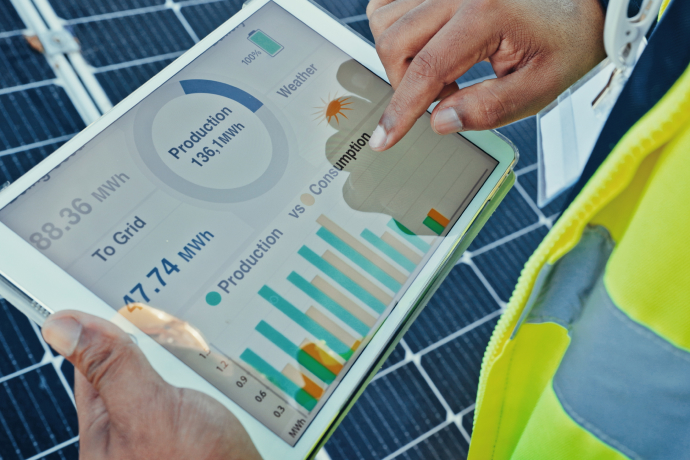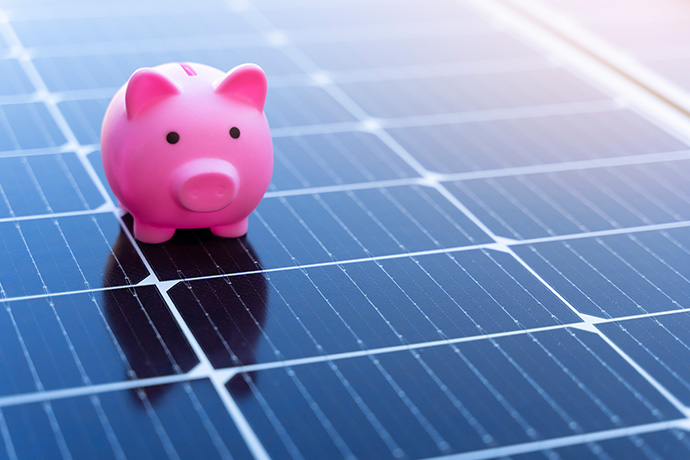
Solar feed-in tariffs are one of the draw cards of solar system installation in Tasmania. Essentially a feed-in tariff is a financial return for installing and using solar power. Tasmania has some of the highest feed-in tariffs in the country at 8.935 cents per kWh, the payment you receive for exporting excess power back to the grid. We explain what a solar feed-in tariff is, who is eligible, how it can save you money, and how to find the best solar feed-in tariff in Tasmania.
What Is A Solar Feed-In Tariff?
A solar feed-in tariff is a payment made in exchange for electricity that is fed back into the grid from the generation of renewable energy, such as solar panels. This is not a cash payment, but a credit on your account.
Sometimes solar panels will generate more power than you need and the leftover solar energy is sent back to the grid. The feed-in tariff is the payment you receive for sending back the unused energy. For instance, if your home uses 500kWh of electricity per month but your solar panels are supplying 650kWh of power, you have 150kWh of excess electricity to sell back to the grid.
Solar feed-in Tariffs are mandated by the Government, or offered voluntarily by the electricity provider. They are sometimes known as a solar bonus scheme or solar buy-back scheme. The feed-in tariff set by the Government is the minimum tariff retailers must adhere to. Individual energy providers then decide if they want to raise their tariff rate.
Types Of Solar Feed-In Tariffs
There are two types of solar feed-in tariffs – gross feed-in tariffs and net feed-in tariffs. Each tariff works differently, but they both pay back for renewable energy you send back to the grid. Some schemes are based on gross feed-in tariffs but most, like Tasmania, are based on net-feed-in tariffs.
Net Feed-In Tariffs: These tariffs credit you for the solar energy you generate and send back to the grid once your residence or business has consumed all the electricity it needs. Net feed-in tariffs are used in Tasmania, South Australia, Queensland, Victoria, NSW and the ACT.
Gross Feed-In Tariffs: With gross feed-in tariffs, your electricity provider will give you credit for the electricity our system generates from a solar system but then bill you separately for the energy you use. Gross feed-in tariffs are being phased out as the implementation of net feed-in tariffs becomes more popular.
Is There A Minimum Solar Feed-In Tariff In Tasmania?
There is a minimum solar feed-in tariff in Tasmania which is set by the independent Tasmanian Economic Regulator each year. Feed-in tariff rates are determined by the regulator each financial year. As of July this year (2024), the minimum feed-in tariff rate has decreased from 10.869 cents per kWH to 8.935 cents per kWh. That means it is 17.8 percent lower than the 2023-24 rate. This lower rate is estimated in accordance with the methodology of the Standing Offer Price Approval Guidelines that regulate fees and policies. The lower rate is due to the 2024-25 forecast of a decrease in wholesale electricity prices.
Solar feed-in tariff rates vary each year. Here is the minimum solar feed-in tariff rates for Tasmania since 2016/17.
| Year | Feed-in Tariff (cents per kWh) |
| 2024/25 | 8.935 |
| 2023/24 | 10.869 |
| 2022/23 | 8.883 |
| 2021/22 | 6.501 |
| 2020/21 | 8.471 |
| 2019/20 | 9.347 |
| 2018/19 | 8.541 |
| 2017/18 | 8.929 |
| 2016/17 | 6.671 |
Eligibility for Tasmanian Solar Feed-In Tariff
Individuals and businesses must meet certain criteria to be eligible for the Tasmanian solar feed-in tariff. To qualify, customers must meet these conditions.
- Have a qualifying electricity generated solar system that meets the Australian standard AS4777 grid connection via inverters.
- A solar system that is connected to the grid and registered for the Solar FIT program with the relevant authority.
- A solar system with a maximum capacity of 10kW for a single-phase system or 30kW for a three-phase system.
- Have energy that is unused onsite transferred back to the grid.
Applying For A Solar Feed-In Tariff
Before you apply for a solar feed-in tariff, you must have your solar system installed. Solar feed-in tariffs are not automatically applied once the system is installed. The first thing to do is contact different electricity suppliers in your area and find out what they offer in terms of rates and their eligibility requirements. If the system meets their conditions and you are satisfied with the rates, you can enter into a contract to receive the feed-in tariff for the electricity they export to the grid. Contracts are valid for as long as the customer stays at the one property and remains with the same electricity supplier.
A Comparison Of Solar Feed-In Tariffs in Tasmania
Tasmania has a minimum solar feed-in tariff but energy providers can provide a higher feed-in tariff if they prefer. Feed-in tariffs can vary significantly as they are at the discretion of the electricity provider. When comparing solar feed-in tariffs, be aware that some retailers offer a high feed-in rate for 12 months and a lower rate after the period has expired. The table below is a comparison of the main Tasmanian electricity providers and their current feed-in tariff minimum and maximum rates.
| Electricity Provider | Current fee-in tariff min | Current feed-in tariff max |
| 1st Energy | 8.94 cents per kWh | 10.7 cents per kWh |
| Solstice Energy | 8.94 cents per kWh | 10 cents per kWh |
| Aurora | 8.94 cents per kWh | 8.94 cents per kWh |
| CovaU Energy | 8.94 cents per kWh | 8.94 cents per kWh |
| Energy Locals | 8.94 cents per kWh | 8.94 cents per kWh |
How To Maximise Solar Returns Using Feed-In Tariffs
Feed-in tariffs amplify the benefits of solar by providing financial rewards for excess energy produced. To further maximise your solar savings using feed-in tariffs, there are a number of strategies you can use.
- Do not install an oversized system to increase feed-in tariffs. Install the right sized system for your home or business. Do not be tempted to install a system that is too large with the hope of more credits on your energy bill. An oversized system can lead to increased setup costs and potential energy wastage. Install a system that is aligned with your actual consumption and will result in maximum cost-effectiveness and efficiency.
- Shift your energy usage to optimal efficiency. Optimise consuming energy from the solar system during the day when the sun is shining. Some appliances can only be used when you are home but there are others that can be used during the day if you are out. This will significantly reduce the amount of electricity you need to buy from the grid and maximise your solar savings.
- Install a quality solar system. By installing a custom-designed solar system through an accredited solar system provider you will increase efficiency, cut costs and reduce your carbon footprint.
- Regular maintenance and cleaning. Make sure the solar system is regularly cleaned and serviced by a solar system professional. This will help avoid any problems building up within the system and ensure it works at peak efficiency.
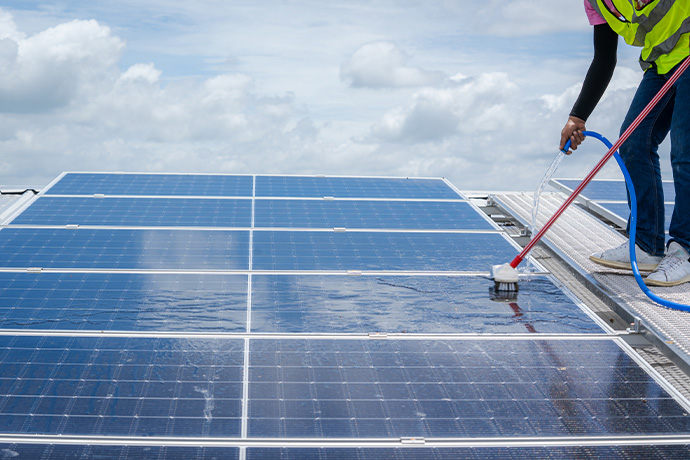
- Monitor the balance between energy usage and feed-in tariff. If you have a solar system but don’t have a battery, monitor how much electricity you use at night. If night time usage costs more than your current solar feed-in tariff, you may need to consider investing in a battery.
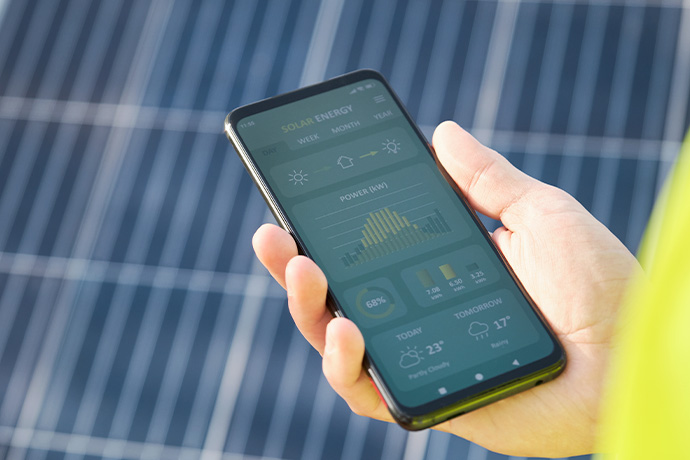
- Use energy efficient appliances. While energy efficient appliances can sometimes cost more upfront, they use less energy which will lower energy bills and overall consumption.
Solar feed-in tariffs in Tasmania are one of the many incentives for installing a solar system, as any unused energy is sold back to the grid. Apart from helping the environment, you are able to increase savings with solar feed-in tariffs. To help you understand how it all works, we have broken down what solar feed-in tariffs are, who is eligible, the best value feed-in tariffs and how to maximise savings.

